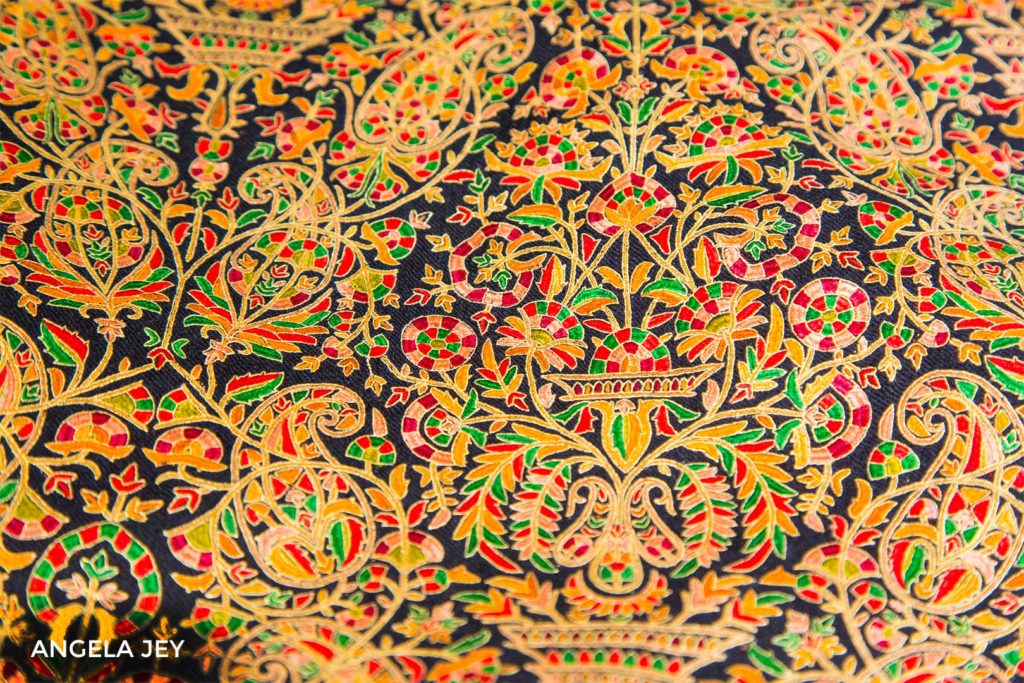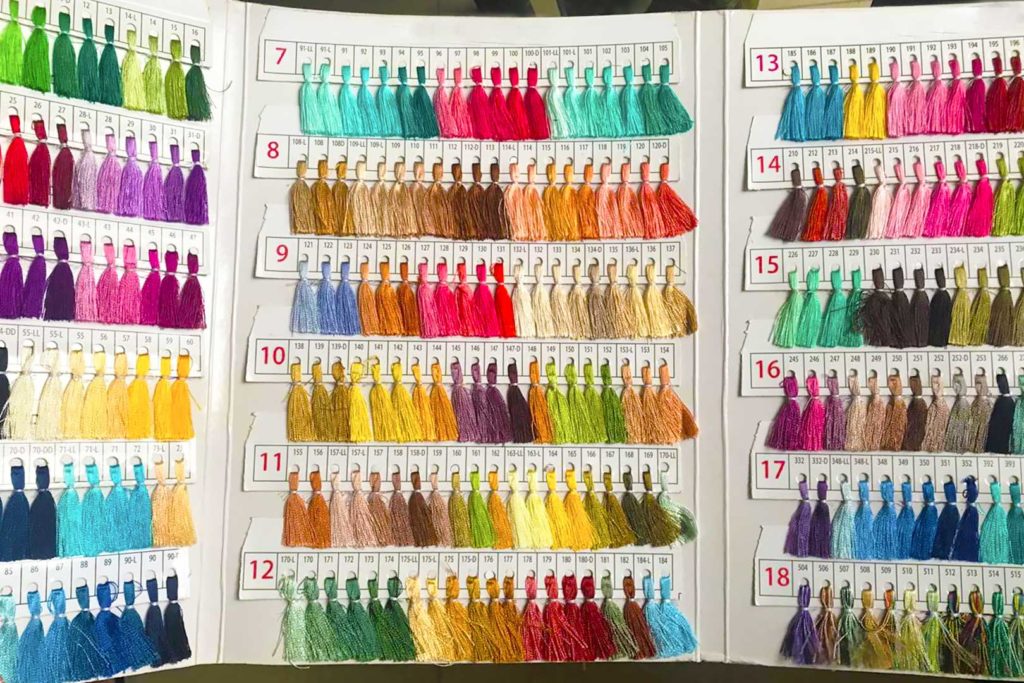
The warmth of the loving hands of the ancient artisans can be seen on Pashmina shawl; even today. This time-tested fabric can be adorned as the family heirloom as you just cannot have enough magic of the Pashmina. Most surprisingly, the magic does not end in this unique and organic fabric which is curated from the hair of the Changthangi goat; the hand embroidery adds more charm to this exquisite piece of cloth.

The hand embroidery on Pashmina shawl is not something new; it has been practicing since the 17th century. Surprisingly, the motifs that have been used on this fabric have not been changed much. Although variations have been added, the assessment and demand for those classic designs have no comparison. Maybe for that reason, the Pashmina Shawl is a time-tested and important component of any family heirloom.
The Embroidery Motifs Of Pashmina Shawl:
As we have said before, the usual motifs are almost constant in Pashmina. Most of the inspirations that the artisan took were from nature that has become a perennial for them. The most recognized motif is of paisley or ‘amb’ which sustains its popularity till now. Another flower shaped motif which is known as ‘butah’ in local language complements the paisley.

During the 18th century, the ‘amlicar’ design on Pashmina shawl was quite famous, but sadly it has vanished completely. In this design, the artisan showed his craftsmanship on the shawl with the Pashmina yarn.
Types of Embroidered Pashmina Shawl:
Different types of hand embroideries enhance the elegance and style quotient of the Pashmina Shawl.

- Sozni Embroidery: This is the most popular and recognized embroidery design on the shawl. The colorful paisley motifs are embroidered with thin needle and silk thread in so meticulously that the base can be barely seen. Sozni works need patience and craftsmanship that make it apart from any other design.
It includes many stitches like run, herringbone, stem, button whole, darning, double darning, and knot stitch to give the complete look. Another important feature that makes the Sozni embroidery recognizable is the tradition to use the scissors to cut off the loose end of the thread from the backside. A single shawl with dense Sozni design may take up to 2-3 years to complete when an experienced artisan keeps working on it for 6 hours a day.

- Kantha Embroidery: This ancient embroidery was started in West Bengal, a state of India for rag stitching. The source of the design is completely from nature as the depiction of flowers, leaves, birds and even animals can be seen. It is a simple running stitch with silk thread that can create a colorful and bright design for Pashmina shawl.

- Aari Embroidery: Aari embroidery or the Crewel embroidery gets its name from the pointed crochet which is known as Aari that is used to make the design. Although many manufacturers are using art-silk thread, the genuine Aari embroidered Pashmina shawl use only pure silk thread. It is considered as the specialty of the Kashmiri Artisans who create the aesthetic design using that needled hook crochet by creating intrinsic and concentric loops. This pattern of embroidery started in the 16th Century when the Mughals patronized it by using it in royal garments.

- Kani Embroidery: The Kashmiri shawl artistry will incomplete without the mention of Kani embroidery. The cane needle is used to weave the colorful silk thread on Pashmina. Depending on the complexities of the pattern, it will take 6 to 18 months to make the shawl.

How does the process of embroidery take place on Pashmina shawl?
Before the starting of the embroidery process, the fabric is dyed to give it the requisite color; but most importantly they are not washed or softened. The embroidered Pashmina weave must be tight enough to hold the design perfectly.

- Creating the pattern: To help the embroidery designer, a tracing of the design with perforated lines is prepared by rubbing of contrast color powder. There is another way to print the design for the embroidery which is the hand block print technique. A design is already carved on a wooden pad which is coated with the powder color solution. Only the experienced hand can affix it on the fabric with a very safe gesture. After the stitching, the pattern can be washed off easily to remove all the trace of the pattern.

- Color Selection: To make the perfect piece of the most luxurious piece of the woolen shawl, the designers need to select the color of the yarn very carefully. After complete satisfaction about the color combination, the designers entrust them to the embroider.

- The Embroidery: Finally, the work of embroidery is carried out by the man at his own home. Generally, the artisans do this job during the winter when fields and other businesses are closed. To complete a Pashmina Shawl, they need a minimum of 2 weeks to several years. The reversible design takes the maximum time that makes the front and backward almost indistinguishable. It is the experience and craftsmanship of the embroider that add value in the Pashmina shawl.

So, you must be eager enough to add this valuable asset in your closet soon! You can check the wide collection of embroidery Pashmina shawl on Angela Jey to get the prized possession delivered at your doorstep. The handcrafted original embroidery Pashmina by Kashmiri artisans will be adorned by generations for sure.
Also Read: How to wear a Pashmina Scarf in Different Ways!
